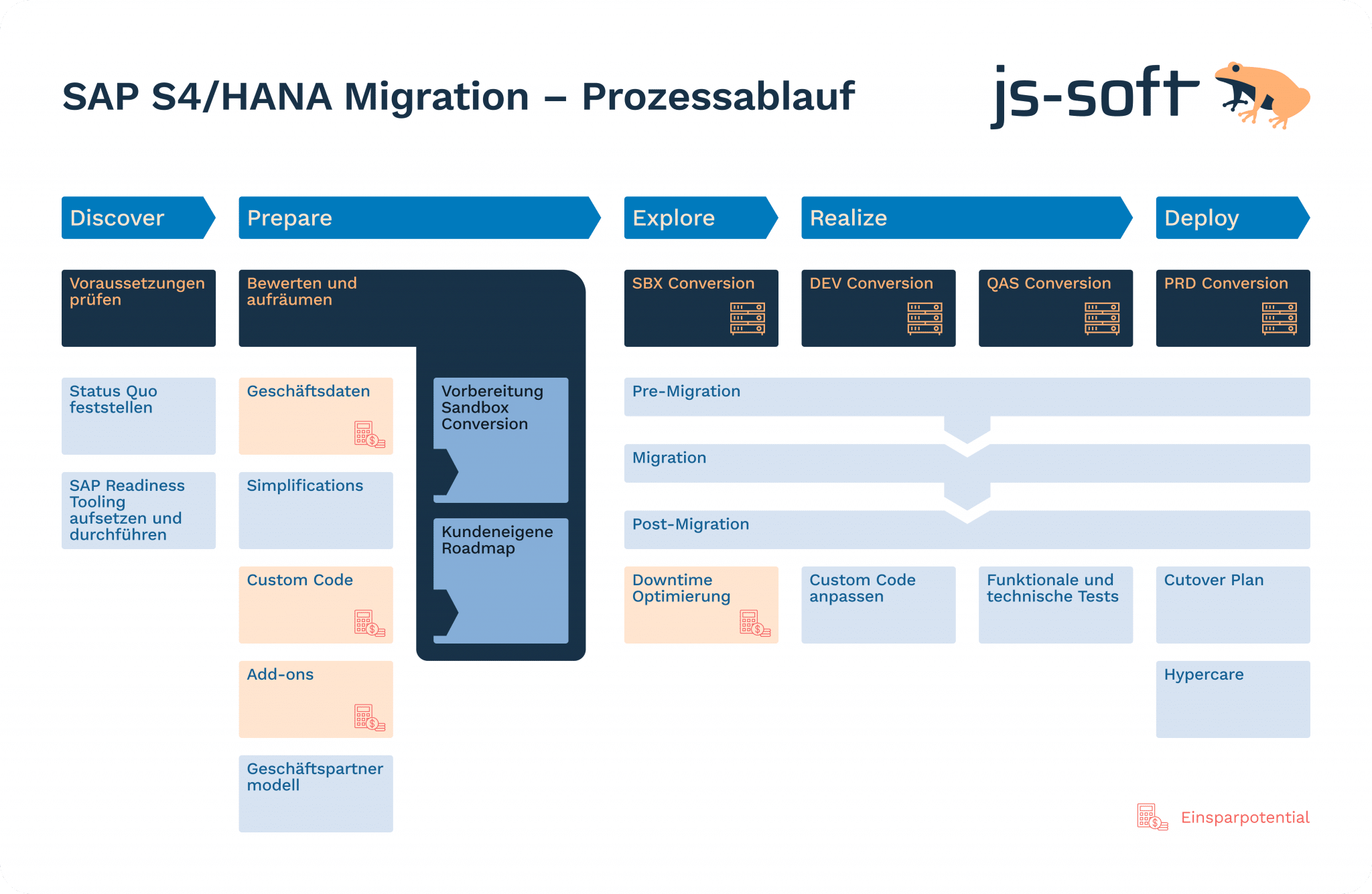Time is running: Anyone who wants to continue using SAP HCM must act. With the upcoming end of maintenance for the current SAP ERP systems, there is no way around SAP HCM for S/4HANA. The transition can be much more than a technical project – it can become a strategic milestone for the future of your HR processes.
1. Planning is everything
Before the actual migration begins, foundations must be laid. A clear project plan, realistic timing, and a deep understanding of your HR processes are essential. Early considerations around data cleansing, customizing, and interfaces set the stage for a smooth process.
2. Reality meets project plan
n practice, it becomes clear: no one fully understands “the SAP system.” Especially in long-established systems with many modules, users, and interfaces, collaboration between IT, departments, and external partners is essential. The following points help:
- nvolve end users and IT early on
- Identify all interfaces (including seemingly “minor” ones, such as Excel uploads)
- Name and connect contact persons
- Manage expectations realistically: migration is additional work, not day-to-day business
3. Use the sandbox, gain experience
A frequently underestimated success factor: copy the production system into a sandbox and test there. This allows for identification of error sources, trial configurations, and team training. Investing here saves time and nerves during live operation.
4. The SAP Readiness Check
Every successful migration begins with the SAP Readiness Check. This tool provides an initial analysis of the current state and highlights which requirements must be met for SAP HCM for S/4HANA.
A key component is the SAP S/4HANA Sizing, which helps identify large-volume tables and potential for optimization. Combined with the Simplification Item Check (SI-Check), unused functionalities can also be uncovered, often pointing to legacy data. Archiving offers a smart alternative to deletion: with archiving objects, legacy data can be removed in a targeted and structured manner – including complex dependencies, such as business partners and associated vendors/customers.
5. The migration process
mportant: Even though SAP HCM for S/4HANA is technically very similar to the “old” HCM, there are differences that must be taken into account. One example: the use of new tools and functions – such as the integration of the Business Partner – brings new requirements.
A commonly underestimated aspect is handling custom developments (custom code). According to SAP, many companies only actively use 40–60% of their custom code. It’s quite easy to track which developments are actually used in the system. This information is essential for custom code scoping. To fully leverage savings potential, tracking should ideally begin a year before migration.
6. Custom code and compatibility
After scoping comes the actual analysis: which parts of the code are compatible with S/4HANA, which need to be adapted or replaced? Tools like the SAP Readiness Check, ABAP Test Cockpit (ATC), the Fiori Custom Code Migration App, or a central check system (locally or via SAP BTP) offer structured support. If necessary, the Business Partner Integration must be prepared (this includes defining roles and number ranges, performing initial synchronization, etc.). It’s important that all analyses follow the same standards – for greater transparency and traceability.
Now the Business Functions are activated: For a complete SAP HCM for S/4HANA, functions such as H4S4_1 and – when using the new Business Partner model – /SHCM/EE_BP_1 must be activated.
This concludes the migration.
7. Post Migration
Post-Migration: Once the system is migrated, the fine-tuning begins. Now it’s determined whether the new HCM system runs efficiently and is future-proof:
- Follow-up Business Partner Integration: perform another initial synchronization and schedule ongoing synchronization.
- Check interfaces: existing integrations, such as with time management or applicant management systems, must be tested.
8. Our Migration Roadmap
Complex projects require clarity. That’s why we at js-soft have developed a structured migration roadmap that presents all phases of the transition at a glance – from preparation to migration to post-project support. We tailor this roadmap to each customer individually. This provides orientation during the project and helps allocate and use resources effectively.
Our roadmap follows the Lean Migration Principle:
- More efficient, because only what is actually used is migrated
- Faster, because we focus on the technical migration
- Transparent, because every phase is clearly and individually documented
Conclusion: Preparation pays off. Migrating to SAP HCM for S/4HANA is a demanding but rewarding project. With early planning, technical depth, clean custom code handling, and a clear focus on communication and configuration, you lay the foundation for a stable and modern HR system.
How js-soft supports you: As experienced SAP experts, we at js-soft guide you through all project phases – from strategy to technical implementation. With proven know-how, tried-and-tested migration paths, and an eye for detail, we ensure your transition is a success.
We offer a workshop that paves the way for a successful migration:
In just a few days and with minimal resources, you will receive a clear action plan and concrete steps for a successful H4S4 transition.
Are you facing migration or already in the middle of it? Let’s talk about how we can support you. Get in touch now.


